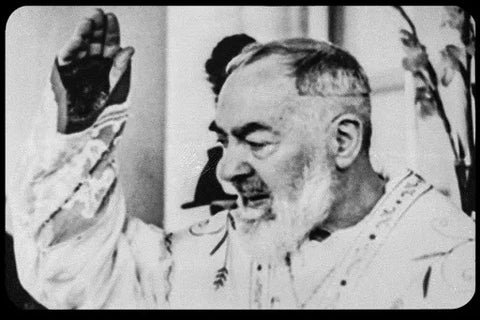St. Padre Pio of Pietrelcina, a beacon of faith, endured a life marked by profound suffering. While known for his miraculous gifts, it is his response to adversity that provides timeless lessons for those navigating life's challenges. In this article, we explore three specific sufferings he encountered—his stigmata, persecution, and demonic attacks—and how his perspective on suffering offers guidance for our own struggles.
The Stigmata: A Divine Sign of Suffering
Padre Pio's most recognizable suffering was his stigmata—the inexplicable manifestation of Christ's wounds on his body. This divine phenomenon began in 1918, accompanied by intense physical pain. Despite the agony, he welcomed the stigmata as a union with Christ's passion, saying, "I want to suffer for all those who will not recognize [Jesus] as their God."
The wounds, which emitted drops of blood, often left Padre Pio weak and fatigued. He endured these physical torments in silence, seeking solace in prayer and contemplation. His willingness to bear the wounds of Christ's crucifixion demonstrated his unwavering devotion and mirrored his perspective on embracing suffering as a means of participating in Christ's redemptive sacrifice.
St. Padre Pio said this about the suffering he experienced due to the stigmata: "My heart is filled with bitterness, but I accept it as the loving will of Jesus."
Persecution: Banned from Celebrating Mass Publicly
In 1931, Padre Pio was unjustly banned from publicly celebrating Mass due to allegations and misunderstandings. This period of persecution tested his patience and humility. Unable to offer Mass, he confided in a letter, "I weep and suffer more over the divine love that is wounded and mistreated by ingratitude."
Isolated from his priestly duties, Padre Pio's response to this suffering was marked by obedience and submission to his superiors. Despite the agony of being prevented from sharing the sacraments, he remained steadfast in his conviction that God's will was being fulfilled through these trials. His example teaches us that even in the face of unjust persecution, humility and trust in God's plan can transform suffering into an opportunity for spiritual growth.
Padre Pio said: "May the Lord grant me the grace to shed the last drop of my blood for the defense of His Church."
Demonic Attacks: A Battle for Souls
Throughout his life, Padre Pio endured relentless attacks from demonic forces seeking to undermine his spiritual work. In his letters, he described the malevolent encounters he faced, acknowledging the spiritual warfare at play. Despite these trials, he remained steadfast, offering, "The devil only kicks at what he thinks is going to be a big loss for him."
These demonic assaults often left Padre Pio physically and spiritually drained, yet he continued to minister to souls seeking his guidance. His resilience in the face of these attacks underscores his commitment to his calling and his unwavering trust in the power of God's protection. Padre Pio's experiences illuminate the reality of spiritual warfare and the importance of standing firm in faith, even amidst the darkest challenges.
St. Padre Pio said: "Oh, if only you knew what the souls of poor sinners undergo, you would never stop praying for them."
Finding Meaning in Suffering
Padre Pio's experiences are a testament to his unwavering faith amid adversity. His response to suffering holds relevance today, inspiring us to confront our trials with grace and courage. His life teaches us that suffering, when accepted and united with Christ's passion, can be transformative and redemptive.
St. Padre Pio's life story transcends time, touching the core of the human experience. His stigmata, persecution, and battles with darkness were not mere afflictions but profound lessons in faith, humility, and spiritual resilience. Through his words and actions, he beckons us to embrace our own crosses, offering them as a means of spiritual growth and a path to a deeper connection with God. As we face our struggles, may we draw inspiration from Padre Pio's example, finding solace in the embrace of the cross and the hope it holds.

